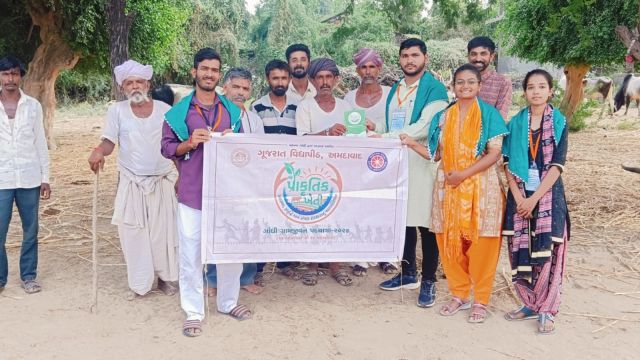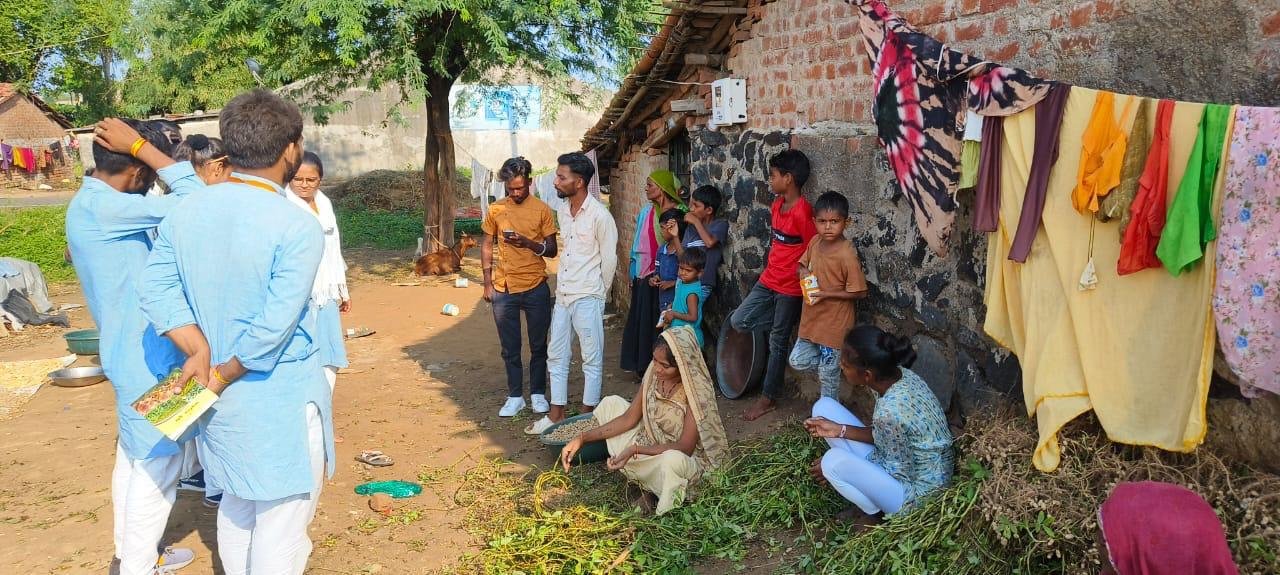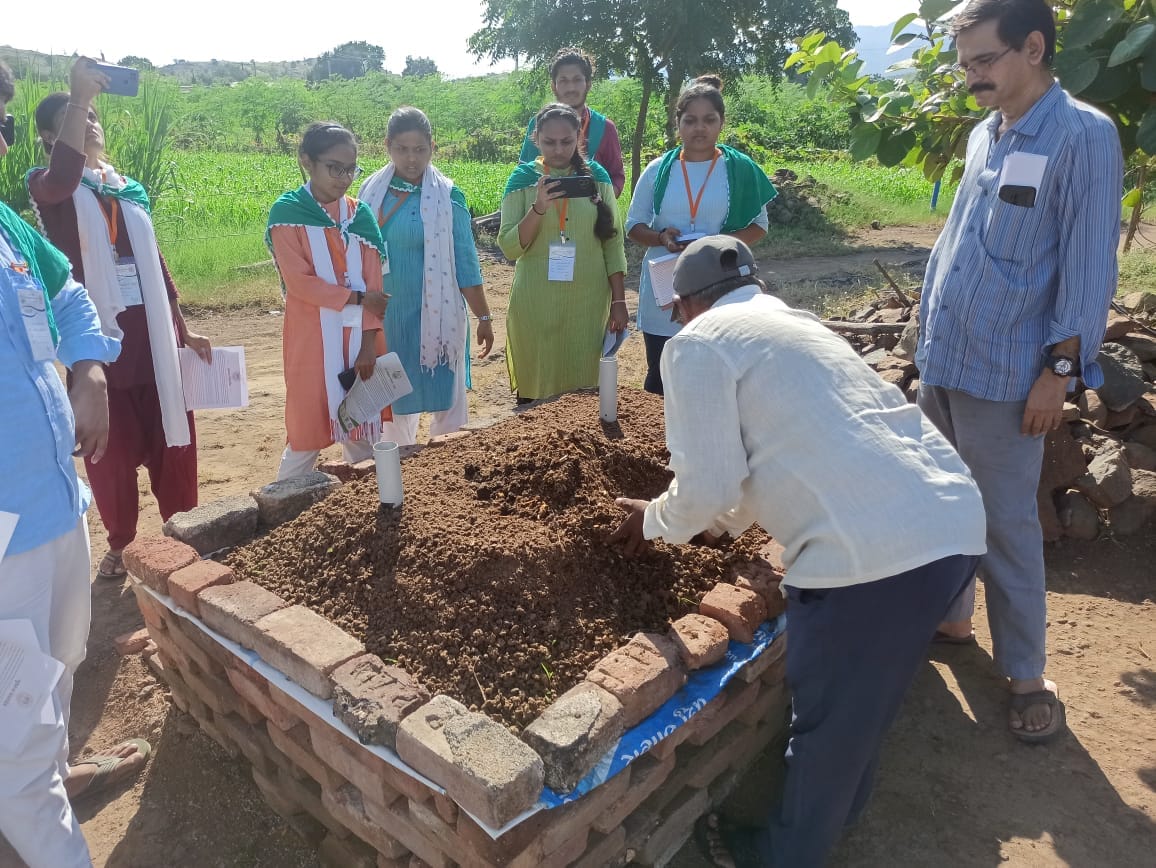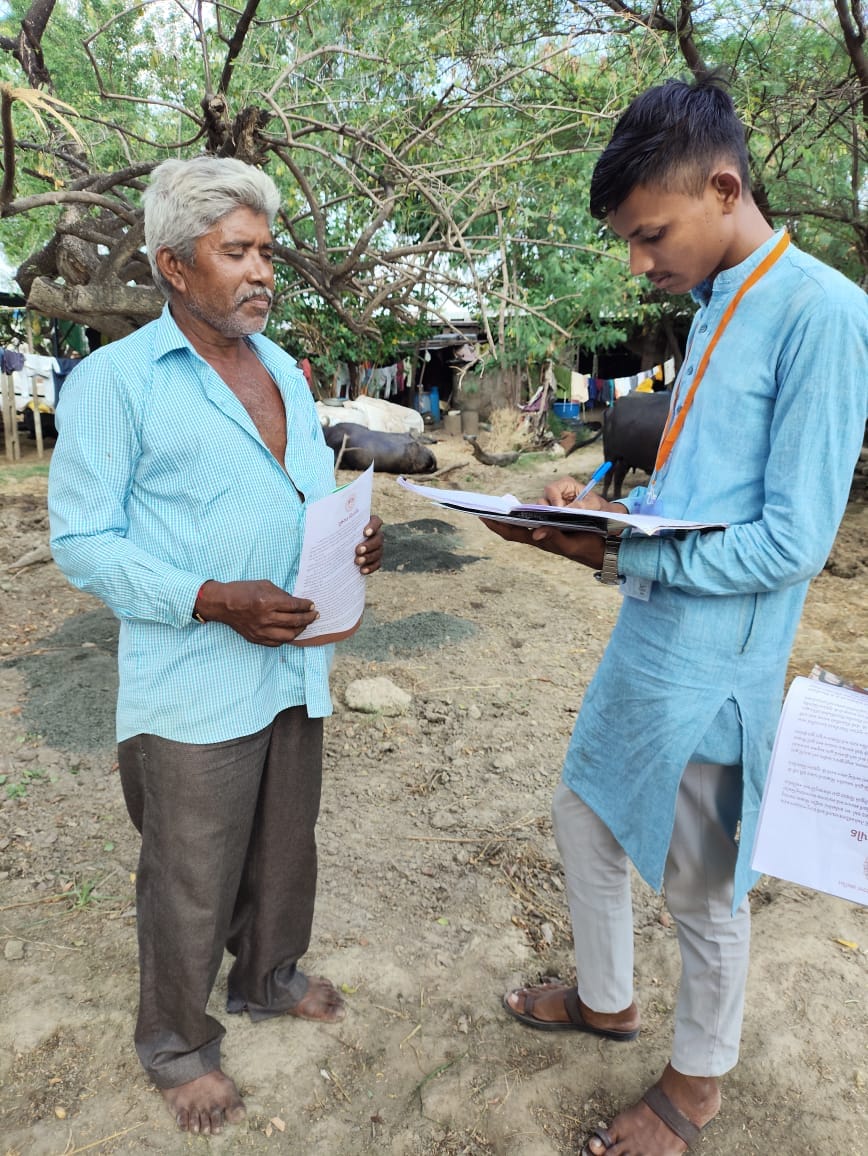18,000 villages covered, natural farming in focus: Gujarat Vidyapith holds mega footmarch
The footmarch — which also witnessed a roadshow — was held under the guidance of Gujarat Governor Acharya Devvrat, who is also the Chancellor of the University.
 This year, students not only shared theoretical knowledge of natural farming but also had hands-on experience before they ventured out on the padayatra.
This year, students not only shared theoretical knowledge of natural farming but also had hands-on experience before they ventured out on the padayatra. Seventeen years ago, when Gujarat Vidyapith in Ahmedabad launched a footmarch of students and faculty members, titled ‘Gramjivan Padyatra’, only four villages were covered. This year, however, as the century-old varsity held the padayatra after a gap of two years, it spanned across all 18,000 villages of Gujarat.
Another difference this year was the theme — natural farming, a deviation from the usual themes of literacy and de-addiction. More than 1,800 students and faculty members who embarked on the padayatra returned with some requests from farmers — developing a market for natural farming products, modifications in insurance schemes, and validation and certification processes for natural farming products. The observations are set to be documented in a report.
 The padayatra, which has been held since 2007, has previously seen students and teachers visiting few villages in four days to experience rural life as well as spread awareness on literacy, de-addiction, and cleanliness, among other principles of Mahatma Gandhi.
The padayatra, which has been held since 2007, has previously seen students and teachers visiting few villages in four days to experience rural life as well as spread awareness on literacy, de-addiction, and cleanliness, among other principles of Mahatma Gandhi.
The footmarch — which also witnessed a roadshow — was held under the guidance of Gujarat Governor Acharya Devvrat, who is also the Chancellor of the University. Even as most farmers are aware of natural farming and its benefits, they are reluctant to switch, fearing low produce, according to the students and faculty members.
Sharing his experiences, Jaydeep Rao, a second-year MBA student of rural management, told The Indian Express, “In the villages we covered, locals know natural farming better than us but still resort to the use of chemicals too to some extent. Their concern is less produce with natural farming while it is more labour intensive.”
 Several obstacles to natural farming were also observed by the students.
Several obstacles to natural farming were also observed by the students.
The padayatra, which has been held since 2007, has previously seen students and teachers visiting few villages in four days to experience rural life as well as spread awareness on literacy, de-addiction, and cleanliness, among other principles of Mahatma Gandhi. The varsity was established by Gandhi in 1920, and to date, it follows Gandhian values of spinning charkha among others.
This year, however, 15-20 villages were covered each day — both on vehicles and on foot.
“Many farmers suggested they see growth if natural farming can be associated with a co-operative sector like dairies in villages. They asked how to differentiate their natural farming products which they wanted a market for,” Rao said, adding that participation in the padayatra turned into a lifetime memory for him.
Several obstacles to natural farming were also observed by the students. In villages around Balasinor, locals do not have cattle — a necessity for natural farming. A majority of youth here have left their homes in search of better opportunities, leaving behind the elderly.
 Talking about the experiences shared by the farmers he met in Kutch, Professor Parikh said, “Many farmers are tired of using pesticides and chemicals as this cost continues to increase every year to achieve higher produce.”
Talking about the experiences shared by the farmers he met in Kutch, Professor Parikh said, “Many farmers are tired of using pesticides and chemicals as this cost continues to increase every year to achieve higher produce.”
However, in villages around Virpur, most families are dependent on cattle and dairy produce to earn their livelihoods. There are not many into farming. “There are no roads in interior most tribal areas where the farmers are using chemical-based fertilizers despite having 60-70 cattle with one family,” said Vanshita Amin from Ahmedabad who was a part of an all-female group of 17. The group was led by a faculty member, and covered 150 villages majorly in tribal areas in three days.
She added, “In Santrampur area, local tribals have cattle for natural farming but if the neighbouring farmer is using chemical fertilisers and have a higher produce, they also follow the same. They are aware of natural farming but not using fearing low produce, thus acceptance levels are low.”
Listing the differences this year, Professor Ajay Parikh from the Computer Science department told The Indian Express, “This year, the model was entirely different. From the format to the message — this year’s padayatra was completely focussed on natural farming, unlike previous themes of de-addiction and literacy.”
Talking about the experiences shared by the farmers he met in Kutch, Professor Parikh said, “Many farmers are tired of using pesticides and chemicals as this cost continues to increase every year to achieve higher produce. They want to get out of this cycle but are confused. Among policy decisions, they want better insurance coverage for natural farming products as well as a defined market for certified and validated products.” However, there are success stories too as several of them are already using natural farming, he added.
“Students and faculty members’ experiences are being documented in the form of a report to help achieve the objectives of padayatra themed on natural farming,” Gujarat Vidyapith Vice Chancellor Harshad Patel told The Indian Express.
This year, students not only shared theoretical knowledge of natural farming but also had hands-on experience before they ventured out on the padayatra. A training programme for students and staff members has been chalked out by Vidyapith’s Krishi Vigyan Kendra (KVK) Randheja in Gandhinagar.
Also, before they ventured out into the fields, Governor Acharya Devvrat gave a special lecture to students and staff on natural farming.












